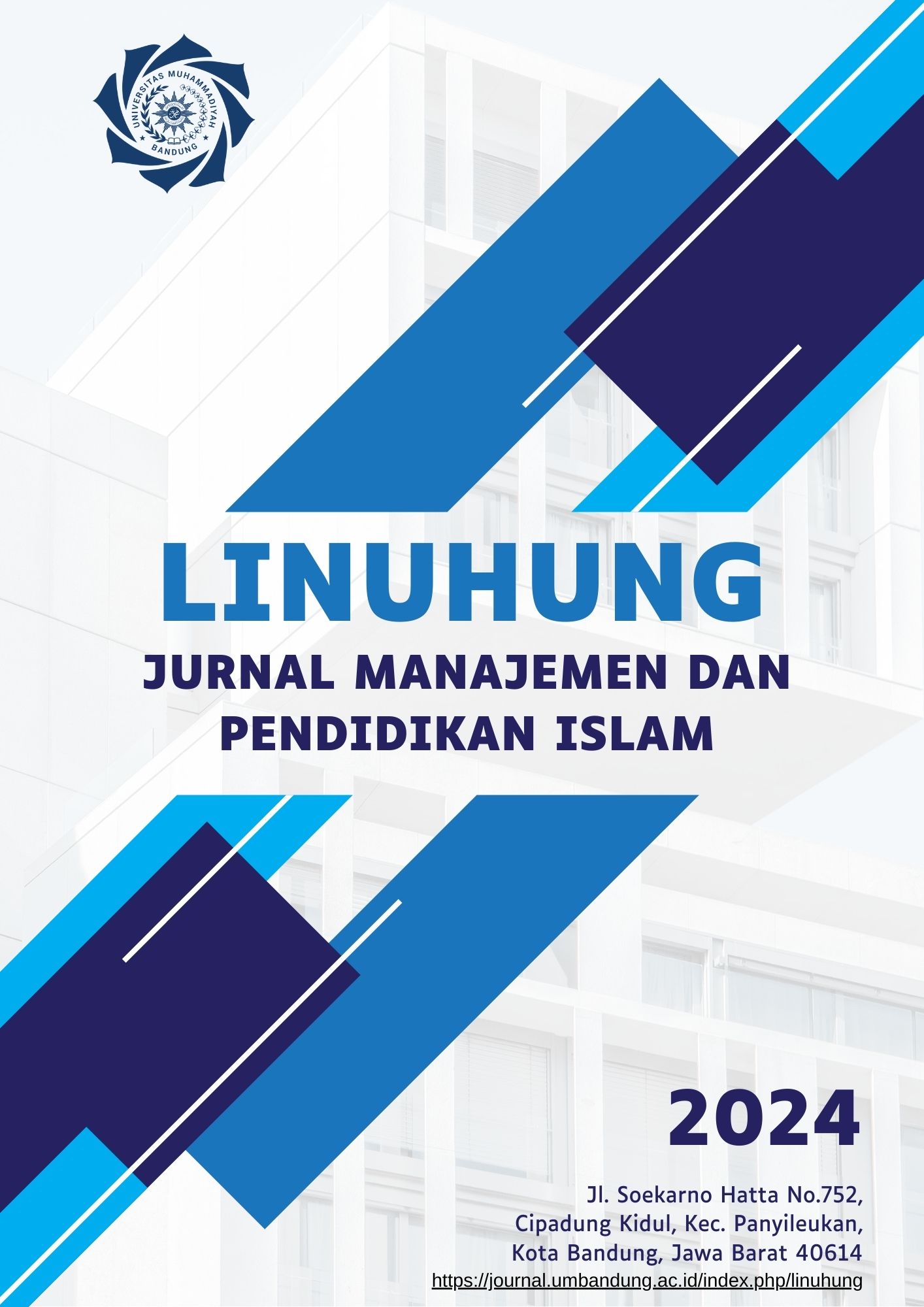Pengembangan Bahan Ajar Cetak dalam Meningkatkan Mutu Pembelajaran Pendidikan Agama Islam
DOI:
https://doi.org/10.52496/linuhung.v1i1.71Kata Kunci:
Development, Printable Teaching Materials, Learning QualityAbstrak
Islamic Religious Education (PAI) plays an important role in education, being the main channel for transferring Islamic values to the younger generation. This study explains the theoretical background regarding the objectives of PAI, including the formation of a true Muslim individual, harmonization with God and the universe, and proper understanding of Islamic teachings. It also highlights the challenges in PAI teaching practices, especially in achieving holistic learning outcomes. The research method focused on analyzing the need for developing printed teaching materials to improve the quality of PAI learning. The analysis includes an understanding of the curriculum, selection of appropriate learning resources, and determination of the type of teaching materials that suit learning needs. The results of this analysis become the basis for developing effective and relevant printed teaching materials. Discussions on the development of PAI print teaching materials emphasize the importance of considering competency standards, appropriate language selection, appropriate teaching methods, and inclusiveness in content delivery. This is aimed at achieving holistic and comprehensive learning objectives in Islamic education. The conclusion of this study reconfirms the importance of developing holistic, interactive, and inclusive printed teaching materials to improve the quality of Islamic Education learning. By considering these aspects, it is expected to achieve sustainable learning objectives and make a positive contribution to learners' understanding and practice of Islamic teachings in daily life.
Referensi
Anud, A. (2019). Pengembangan Sumber Belajar Pendidikan Agama Islam (Pai) Berbasis Literasi Di Sekolah Menengah Pertama (Smp) Negeri 1 Gandusari Kabupaten Blitar. Program Magister Pendidikan Agama Islam Pascasarjana Institut Agama Islam Negeri.
Aprilia Riyana Putri. (2017). No TitleIslamic University of Nahdlatul Ulama Jepara. Pengembangan Materi Bahasa Inggris Untuk Anak Usia Dini Di Paud Pelangi Guyangan. Endulingue, 4.
Ashfahany, F. A., Adi, S., & Hariyanto, E. (2017). Bahan Ajar Mata Pelajaran Pendidikan Jasmani Olahraga Dan Kesehatan Dalam Bentuk Multimedia Interaktif Untuk Siswa Kelas Vii. Jurnal Pendidikan: Teori, Penelitian, Dan Pengembangan, 2(2).
Hermawan, Y. C. (2020). Konsep Kurikulum Dan Kurikulum Pendidikan Islam. Jurnal Mudarrisuna, 10(1). http://dx.doi.org/10.22373/Jm.V10i1.4720
Kosasih. (2021). Pengembangan Bahan Ajar. Jakarta: Sinar Grafika Offset.
Magdalena, I., Sundari, T., Nurkamilah, S., Ayu Amalia, D., & Muhammadiyah Tangerang, U. (2020). Analisis Bahan Ajar. Jurnal Pendidikan Dan Ilmu Sosial, 2(2), 311–326.
Mahmudin. (2021). Pengembangan Bahan ajar Mata Pelajaran Pendidikan Gama Islam Oleh Guru Tingkat Sekolah Dasar. SITTAH : Journal of Primary Education, 2(2).
Muh Husyain Rifa’I, Dkk. (2022). Model Pembelajaran Kreatif, Inspiratif, Dan Motivatif. Cirebon: Yayasan Wiyata Bestari Samasta
Paskalia Yasinta, Etriana Meirista. (2020). Studi literatur: peningkatan kemampuan berpikir kritis matematis siswa melalui pendekatan contextual teaching and learning. Jurnal Pendidikan, 2.
Supriadi. (2015). Pemanfaatan Sumber Belajar Dalam Proses Pembelajaran. Lantanida Journa, 3(2).
Zulaiha, Siti.(2016). Pendekatan Contextual Teaching And Learning (CTL) Dan Implementasinya Dalam Rencana Pembelajaran PAI MI. Jurnal Pendidikan Islam, 1.
Unduhan
Diterbitkan
Cara Mengutip
Terbitan
Bagian
Lisensi
Hak Cipta (c) 2024 Haerani Wahidah, Hafid Muslih

Artikel ini berlisensiCreative Commons Attribution-ShareAlike 4.0 International License.













